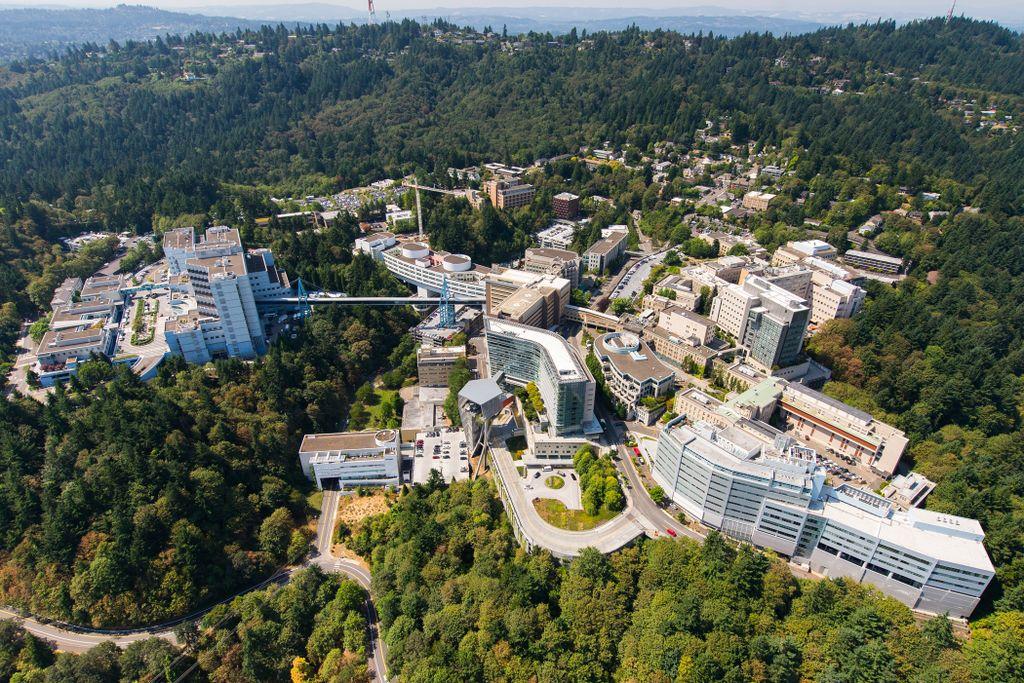
For the second time in nearly three years, a noose was found on the Oregon Health & Science University campus.
In the latest incident, an OHSU security officer responded to a report of a noose looped over a construction cone in a secure area near a research building on the hill, according to an OHSU statement posted on Friday. The officer dismantled the noose and investigators reviewed video footage from two cameras in the area, but they did not capture any evidence. OHSU staff found the noose on Thursday morning, the statement said. Investigators are reviewing badge reader evidence to determine who had access to the area.
OHSU's president, Dr. Danny Jacob, who is African American, and Greg Moawad, the interim vice president of human resources, condemned the incident.
"This action is abhorrent, and we recognize that this symbol can be traumatic to members of our community," they said in a statement. "We regret any distress it caused and acted quickly to remove it. OHSU does not tolerate harassment or intimidation of any kind. We embrace a culture of inclusion and encourage employees, patients, visitors and students to speak out against such acts. Harsh consequences are imposed for anyone at OHSU who by word or action is hostile to others. Anyone who witnesses harassment or discrimination at OHSU is encouraged to report it."
The incident came a day after an internal announcement of the resignation of Brian Gibbs, vice president for equity and inclusion. A statement on the university's internal website said he was resigning Dec. 31 for personal reasons. Gibbs has been in the job for three years and has led diversity training for more than 9,600 faculty, staff and students, the announcement said.
Despite that training, a noose appeared on campus in January 2017. An African American employee, medical assistant Maria Frazier, discovered it. She was so upset that she ended up taking medical leave. For her, and for many African Americans, a noose represents a time in U.S. history when it was not uncommon for African Americans to be lynched by racist mobs in the South.
Matt Hilton, president of Local 328 of the American Federation of County, State and Municipal Employees, which represents 7,000 OHSU employees, said he was stunned that the noose was found in an area that only employees could access by swiping their badges.
"We absolutely share OHSU's condemnation of what occurred," Hilton said. "It's good to know that they're taking it seriously. It's our hope we can partner together to address ongoing concerns about this subject -- there is clearly a need to do so."
The noose that Frazier discovered was taped to a sign that read, "Stress Reduction Kit" above a circle that said, "Bang Head Here." It appeared days after the election of President Donald Trump in 2016, at a time when racist incidents were on the rise.
The noose was added to the sign by a physician's assistant who worked in the angiography department of OHSU, Hilton said.
Frazier took medical leave but felt OHSU did not properly address the incident. AFSCME filed a grievance on her behalf but that the measure failed, Hilton said. She ended up resigning. The physician's assistant is still at OHSU, he said.
At the time, Dr. Joe Robertson was president of OHSU. He posted a short statement on OHSU's website at the time, saying the university had taken "appropriate action." It's unclear what that entailed. Hilton said that since the physician's assistant was not in the union that OHSU had full authority over any discipline.
It's unclear what the university has done since then to improve race relations on campus.
A message about the latest noose that was posted on OHSU's internal website urged staff who experience discrimination, harassment or intimidation to alert affirmative action personnel, public safety officials or confidential advocates.
You can contact Lynne Terry at [email protected].
